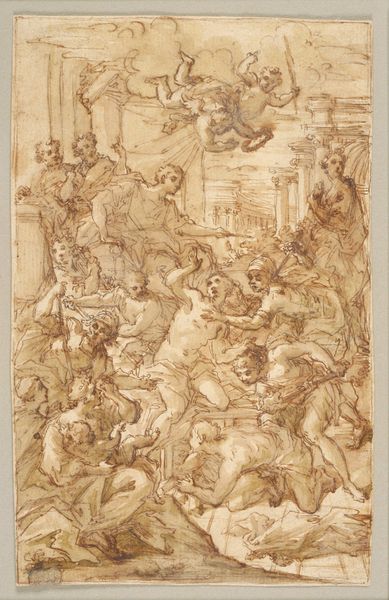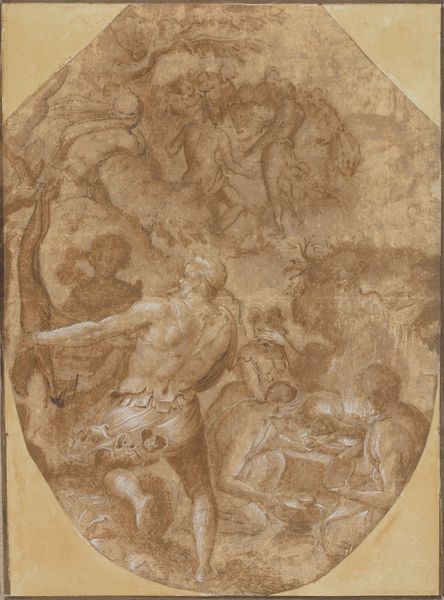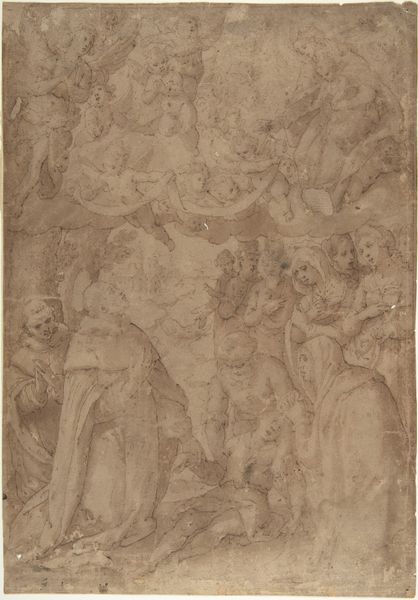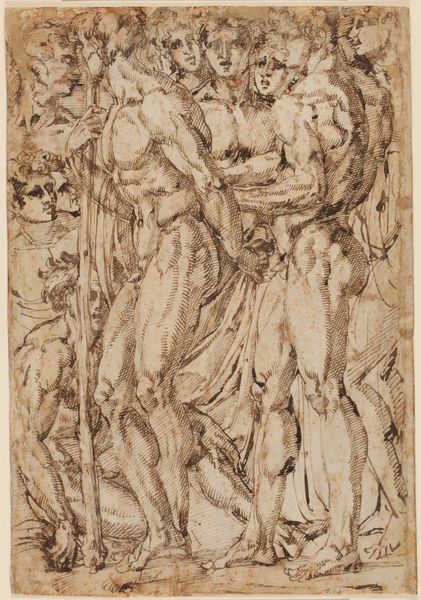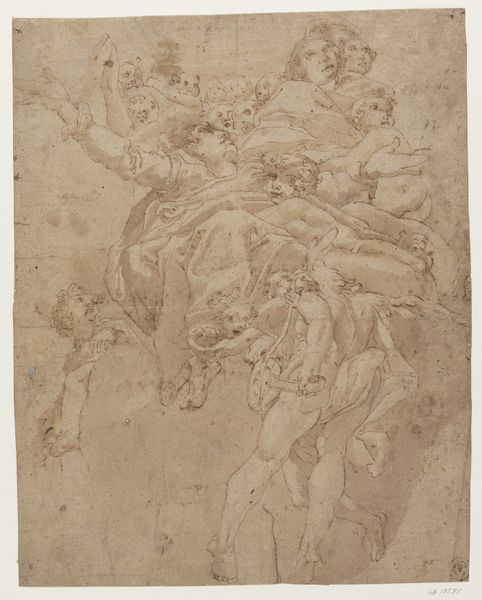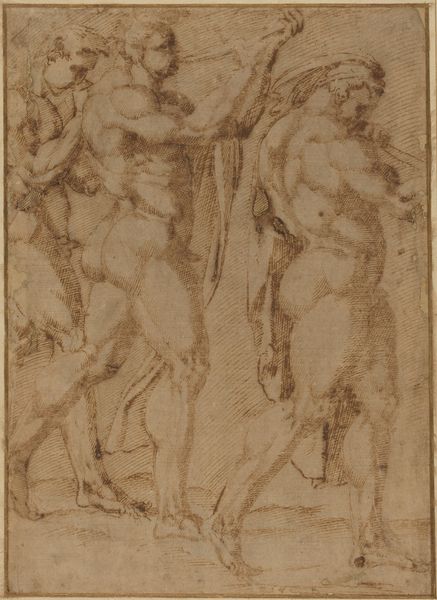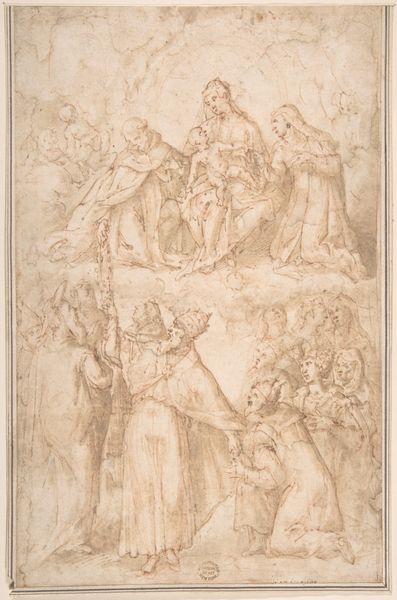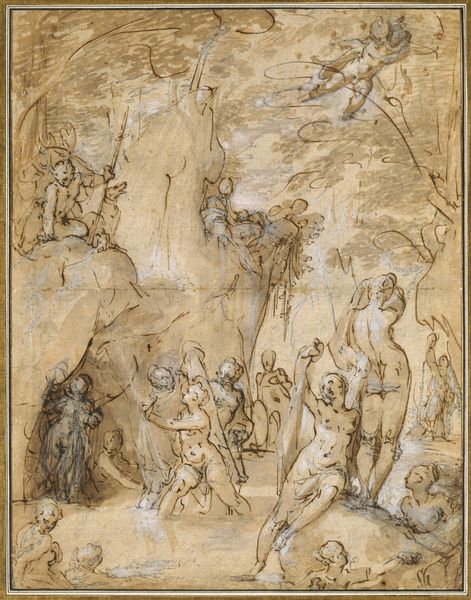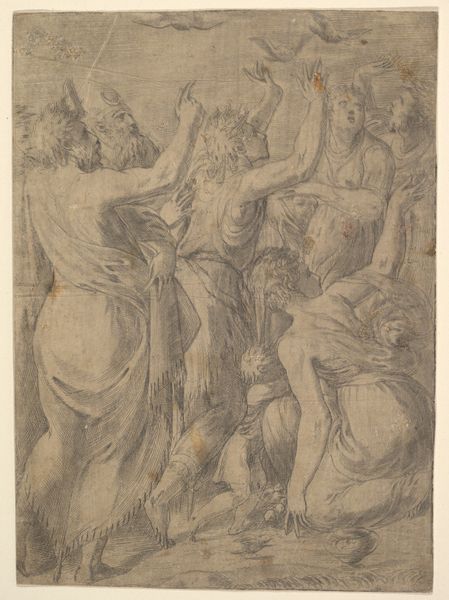
drawing, red-chalk, ink, chalk, pen
#
portrait
#
drawing
#
narrative-art
#
red-chalk
#
figuration
#
ink
#
13_16th-century
#
chalk
#
line
#
pen
#
history-painting
#
italian-renaissance
Copyright: Public Domain
Curator: This drawing is "Madonna and Saints," attributed to Andrea Boscoli around 1597, and it resides here in the Städel Museum collection. It's executed in pen, ink, and red chalk. Editor: Immediately, I’m struck by how dynamic the composition is, all these figures swirling upwards towards the Madonna. It almost feels… theatrical? Curator: That theatricality reflects the influence of the Counter-Reformation on art. The Church sought to engage the faithful, and artwork like this emphasized dramatic narratives and emotional connection. Consider the poses – the figures below gazing up, the angels caught in mid-flight. It’s all designed to elevate the viewer’s experience. Editor: Absolutely, there’s a clear hierarchy. Madonna is literally elevated. I’m curious about the figures at the bottom. Are they specific saints, or more allegorical representations of believers? It speaks to power structures within the church at that time. The placement and gestures all seem quite deliberate. Curator: We think they're saints particularly revered in the regions where Boscoli was active. It's likely he tailored his depictions to local devotional practices. It reflects how the universal message of the Church was constantly being adapted and reinterpreted at a local level. Editor: I notice the red chalk medium also brings a warmth, softening what could have been a stark scene. How did that material choice affect the distribution of his pieces? Were pieces like these circulated beyond the inner circles of patrons? It begs questions about class dynamics, the material implications of religious faith at the time. Curator: Drawings like this often served as preparatory studies for larger paintings or frescoes. They would circulate within the artist’s workshop or amongst other artists and patrons. It allows us to get a glimpse into his creative process, which can inform so much of what religious experience looked like at the time. Editor: Knowing it's a preparatory drawing does shift my perspective; there's something vulnerable about it. The layers and visible line work suggest a seeking of something, of deeper meanings. And maybe, also a seeking to affirm the place and meaning of the individual, within systems of both power and belief. Curator: It's a beautiful paradox, isn't it? A deeply structured piece with so much freedom to discover something personal through an age defined by religious institution. Editor: It makes me appreciate this even more! Thanks for that insight.
Comments
No comments
Be the first to comment and join the conversation on the ultimate creative platform.
